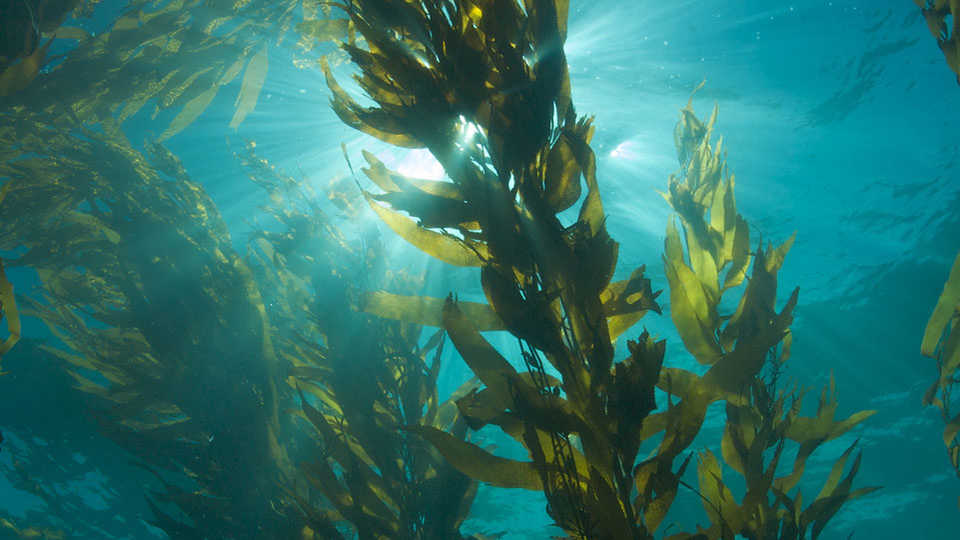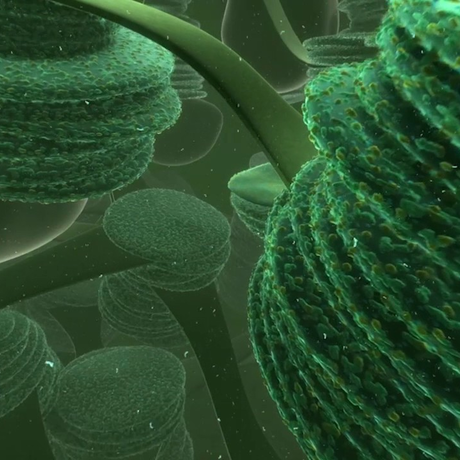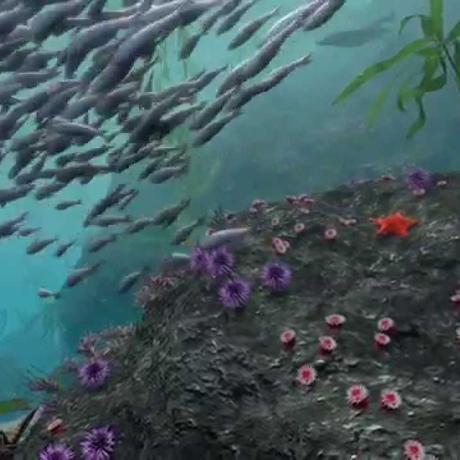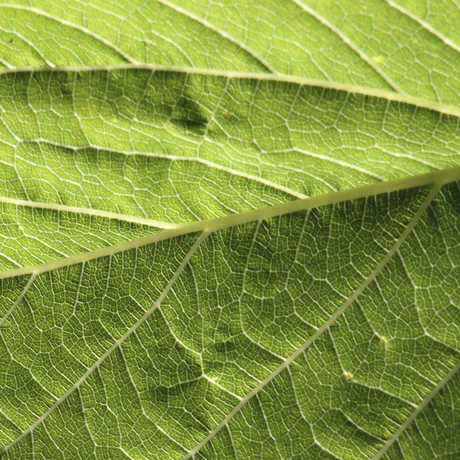Kelp is classified as brown algae and is also referred to as seaweed. Seaweeds are marine algae that are separated into three groups; brown, green, and red algae. They all need salty water and the energy of the sun to make their own food. Therefore, they live in the shallow, rocky intertidal zone of the ocean to be able to photosynthesize. Sunlight is captured by blades of the kelp and a chemical reaction involving water, carbon dioxide, and sunlight takes place producing sugars and oxygen. Kelp releases the oxygen into the water and the sugar is used for food. See the formula for photosynthesis below:
6H2O + 6CO2 ----------> C6H12O6+ 6O2
Kelp differs from flowering plants in many ways. They attach themselves to the rocky bottom using their holdfasts and grow tall, reaching for the sun. The intertidal zone is incredibly turbulent due to the crashing waves so the holdfast secures the kelp to the bottom. The blades of the plant reach the surface of the water because of air filled sacs below them that keep them afloat. Kelp needs to be submerged in cool, nutrient-rich water. If kelp is out of the water and is exposed to too much sunlight, the blades will dry out and the plant will die.
Found along the west coast of California, kelp forests provide shelter for numerous organisms in the cold waters of the Pacific Ocean. This habitat also serves as a nursery for juvenile fish and invertebrates. Kelp also produces oxygen and is a major food source for fish and invertebrates such as sea urchins and sea slugs. Most seaweed is highly nutritious and is also eaten by many people all over the world.
Did you know? Kelp is also harvested from the ocean for commercial use (after all, it can grow 2 feet per day, up to 150 feet tall!). You can find a component of kelp in ice cream, toothpaste, cosmetics, salad dressing, and much more! Look on the ingredients label for “algin” or “carrageenan”.



